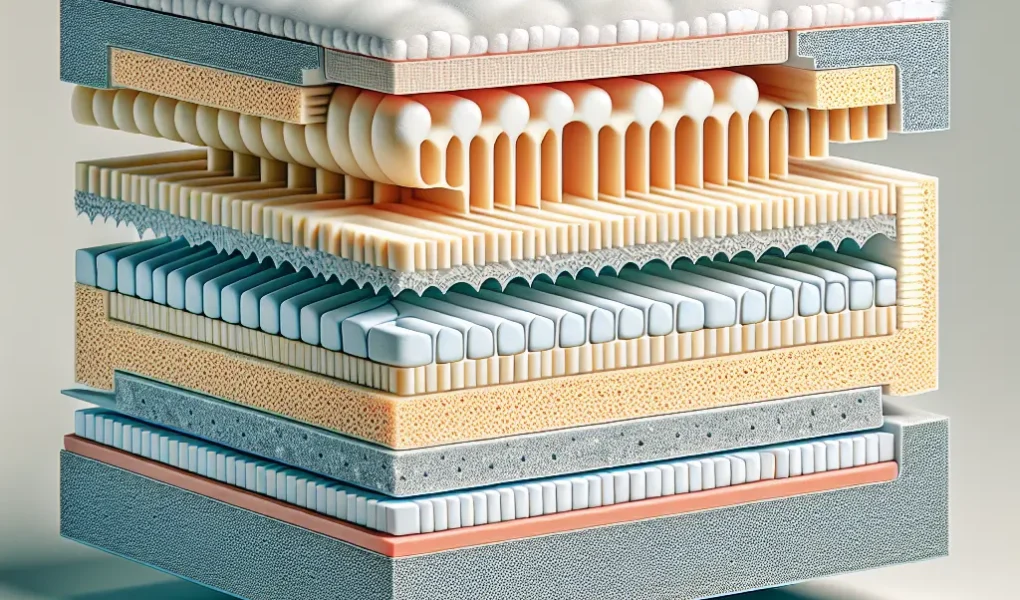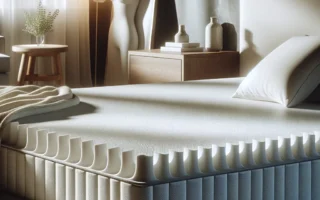The Evolution of Foam Mattresses: From Tradition to Technology
Foam mattresses have come a long way in recent years, evolving from traditional materials to cutting-edge technology. The evolution of foam mattresses showcases the marriage of scientific innovation and the pursuit of ultimate comfort. Traditionally, mattresses were predominantly made of steel springs and cotton padding, offering limited support and often causing discomfort. However, with advancements in material science, foam mattresses have revolutionized the way we sleep.
One of the key milestones in the evolution of foam mattresses was the introduction of memory foam, a material originally developed by NASA to improve seat cushioning and crash protection for airline pilots and passengers. This viscoelastic foam proved to be a game-changer for mattresses, as it could contour to the body’s shape, providing personalized support and relieving pressure points. The shift towards memory foam marked a significant departure from conventional spring mattresses, offering unparalleled comfort and support.
Furthermore, the development of open-cell foam technology has allowed for better airflow and temperature regulation in foam mattresses, addressing common concerns about heat retention. By optimizing the cell structure of the foam, manufacturers have been able to enhance breathability and cooling properties, ensuring a more comfortable sleep environment.
Overall, the evolution of foam mattresses signifies a transition from traditional sleep surfaces to innovative, science-backed solutions that prioritize comfort, support, and restorative sleep. This convergence of tradition and technology has paved the way for a new era of sleep experiences, elevating the way we approach rest and relaxation.
The Comfort Revolution: Exploring the Science of Foam Mattresses
Foam mattresses have sparked a comfort revolution in the world of bedding, offering a unique blend of support and softness that has captivated consumers. This shift towards foam mattresses is backed by science, as these mattresses are designed to contour to the body’s shape, distributing weight evenly and relieving pressure points. The key to their comfort lies in the material they are made of, typically viscoelastic foam or memory foam, which reacts to body heat and molds to the sleeper’s form. This results in a customized and supportive sleeping surface, promoting better spinal alignment and reducing tossing and turning throughout the night.
Unveiling the Secrets of Foam Mattresses: A Scientific Perspective
When it comes to understanding the science behind foam mattresses, it’s essential to delve into the intricate details that make them stand out in the world of bedding. Foam mattresses are designed to provide optimal support and comfort, and their unique benefits are deeply rooted in scientific principles.
One of the key elements of foam mattresses is their ability to contour to the shape of the body, providing personalized support for the sleeper. This is made possible by the viscoelastic foam material, which is sensitive to temperature and weight. As the foam responds to the body heat and pressure, it molds to the sleeper’s shape, offering unparalleled comfort and reducing pressure points.
Additionally, the cellular structure of foam mattresses plays a significant role in their exceptional performance. The open-cell structure promotes airflow and breathability, contributing to a cooler and more comfortable sleeping environment. This feature is particularly beneficial for those who tend to sleep hot or experience night sweats.
Furthermore, foam mattresses are engineered to minimize motion transfer, allowing for undisturbed sleep even when sharing the bed with a partner. This is achieved through the damping properties of the foam, which absorb and isolate movement, ensuring that any disturbances on one side of the bed do not affect the other side.
From a scientific perspective, the innovative design and materials used in foam mattresses demonstrate a profound understanding of sleep ergonomics and human physiology. By leveraging these scientific principles, foam mattresses deliver a sleep experience that prioritizes support, comfort, and overall well-being.
In conclusion, the secrets of foam mattresses lie in their scientific foundation, which enables them to offer unique benefits such as personalized support, temperature regulation, motion isolation, and enhanced sleep quality. Understanding the scientific intricacies behind foam mattresses sheds light on why they have become a popular choice for discerning sleepers seeking the perfect blend of science and comfort.
Enhancing Sleep Quality: The Advantages of Foam Mattresses
Foam mattresses have gained popularity in recent years due to their ability to enhance sleep quality in numerous ways. One of the key advantages of foam mattresses is their unparalleled ability to provide support and comfort, leading to improved sleep posture and reduced tossing and turning throughout the night. The unique structure of foam mattresses allows them to contour to the body, offering customized support and pressure relief, which can be especially beneficial for individuals with chronic pain or discomfort.
Furthermore, foam mattresses are designed to minimize motion transfer, meaning that movements on one side of the bed are less likely to disturb a sleeping partner on the other side. This can be particularly advantageous for couples with different sleep schedules or anyone who shares a bed with a restless sleeper. Additionally, foam mattresses are effective in reducing the impact of allergens, as their dense structure inhibits the accumulation of dust mites and other common allergens, thus promoting a healthier sleep environment.
Moreover, the temperature-sensitive nature of foam mattresses allows them to respond to body heat, softening and molding to the sleeper’s body. This feature helps in maintaining a comfortable sleeping temperature throughout the night, minimizing disruptions caused by overheating or excessive sweating. Overall, the science behind foam mattresses aligns with the goal of enhancing sleep quality by addressing various factors that can impact an individual’s ability to achieve restorative and uninterrupted sleep.



